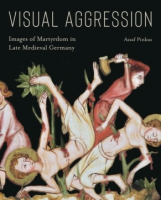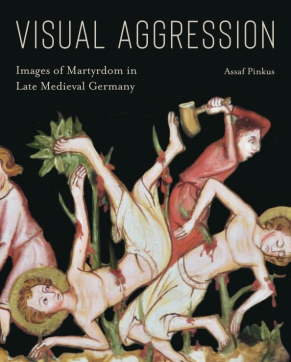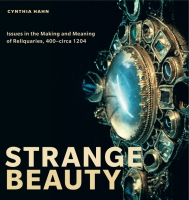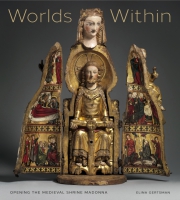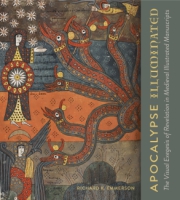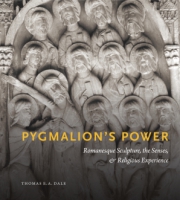Visual Aggression
Images of Martyrdom in Late Medieval Germany
Assaf Pinkus
“This is a valuable lesson in looking, and a model of careful and well-supported visual analysis that moves beyond familiar linkages between violent imagery and the imitation of Christ.”
- Description
- Reviews
- Bio
- Table of Contents
- Sample Chapters
- Subjects
Images of martyrdom in late medieval Germany reveal a strikingly brutal parade of passion: severed heads, split skulls, mutilated organs, extracted fingernails and teeth, and myriad other torments. Stripped from their devotional context and presented simply as brutal acts, these portrayals assailed viewers’ bodies and minds so violently that they amounted to what Pinkus describes as “visual aggressions.” Addressing contemporary discourses on violence and cruelty, the aesthetics of violence, and the eroticism of the tortured body, Pinkus ties these galleries of violence to larger cultural concerns about the ethics of violence and bodily integrity in the conceptualization of early modern personhood.
Innovative and convincing, this study heralds a fundamental shift in the scholarly conversation about premodern violence, moving from a focus on the imitatio Christi and the liturgy of punishment to the notion of violence as a moral problem in an ethical system. Scholars of medieval and early modern art, history, and literature will welcome and engage with Pinkus’s research for years to come.
“This is a valuable lesson in looking, and a model of careful and well-supported visual analysis that moves beyond familiar linkages between violent imagery and the imitation of Christ.”
“Visual Aggression is not only valuable as a new resource engaging with an infrequently studied category of objects, Pinkus’s analysis of monumental and public facing devotional imagery also provides a much-needed counterpoint to the more frequently discussed objects and devotional practices used by medieval mystics and religious communities.”
“Many readers will undoubtedly appreciate Pinkus’s emphasis on nondevotional responses to martyrdom scenes as a refreshing alternative to the imitatio Christi model that has traditionally informed interpretations of these images.”
“Visual Aggression is a game-changer in the study of violence in medieval art. While violence in itself was a fertile field in medieval studies, this book enables us to rethink the core questions behind the assumptions some medievalists have regarding the meaning and function of acts of violence in medieval art and culture.”
“A suggestive and richly illustrated study of violence imagery in late medieval German-speaking lands. Pinkus meticulously collates and catalogues the monumental ‘galleries of violence’ that are his focus, contextualising sculptural cycles of martyrdom in the Upper and Middle Rhine regions with reference to local histories and circumstances. Attentive to issues of language, he also shows how the concept of violence came to be located within an ethical system. The result is a significant contribution to our understanding of medieval martyrdom imagery and the responses it elicits.”
Assaf Pinkus is Professor of Art History at Tel Aviv University. He is the author of Sculpting Simulacra in Medieval Germany, 1250–1380 and Patrons and Narratives of the Parler School: The Marian Tympana, 1350–1400. His current studies focus on giants and the temporalities of salvation.
List of Illustrations
Acknowledgments
Introduction: Weep Not for Me . . . But Weep on Yourselves
1 Visual Rhetoric
2 Between Theological and Juridical Positions
3 Bodily Imagination, Imagined Bodies
4 Eroticized and Sexualized Bodies
5 The Body Reincarnated
Epilogue: Effect and Response to Violence Imagery
Notes
Bibliography
Index
Download a PDF sample chapter here: Introduction
Mailing List
Subscribe to our mailing list and be notified about new titles, journals and catalogs.
